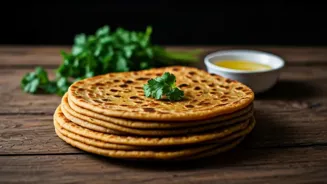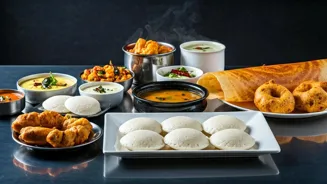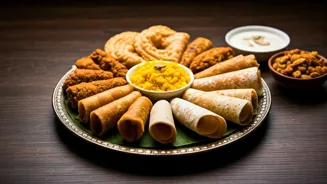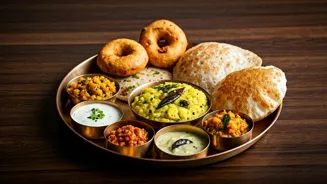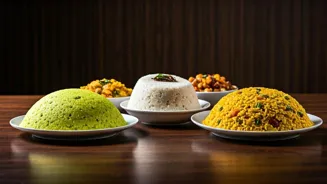Ragi Introduction
Ragi, also known as finger millet, holds a special place in the culinary landscape of India. It's a powerhouse of nutrients, packed with fiber, calcium,
and essential amino acids. Historically, Ragi has been a dietary foundation for many communities in South India, appreciated for its resilience and ability to thrive in challenging climates. Its versatility allows for various preparations, from breakfast staples to desserts, making it a staple in the Indian diet. This exploration will delve into classic and modern ways to enjoy this ancient grain.
Ragi Dosa Delight
One of the most popular ways to enjoy Ragi is in the form of a crispy and flavorful dosa. The recipe typically involves fermenting a batter made of ragi flour, rice, and urad dal. After fermentation, the batter is spread thinly on a hot griddle, resulting in a golden-brown, slightly tangy crepe. The beauty of Ragi dosa lies in its health benefits and adaptability. It can be paired with various chutneys and sambar, offering a balanced and satisfying meal. This traditional dish highlights Ragi's ability to blend taste and nutrition.
Ragi Mudde Experience
Ragi Mudde, a staple in Karnataka cuisine, is another way to enjoy Ragi. This dish consists of a thick, dumpling-like consistency made by cooking ragi flour in boiling water. The result is a filling, dense, and nutritious ball that is usually served with sambar, curries, or other gravies. The preparation might seem simple, but it is a testament to the rustic charm of Ragi. The process ensures that all nutrients are retained, offering a wholesome meal. This dish underscores Ragi's role as a foundation for nourishing traditional meals.
Ragi Idli Fusion
Transforming a breakfast staple into a healthier version, Ragi idli is a testament to Ragi's adaptability. Substituting rice flour with ragi flour, these steamed cakes offer a delightful variation on the traditional idli. The cooking process is the same, but the outcome is a softer, darker idli, packed with more nutrients. Served with coconut chutney and sambar, Ragi idli is a perfect start to your day, offering an ideal blend of taste and wellness. It showcases Ragi's ability to modernize traditional foods for health-conscious individuals.
Ragi Ladoo Joy
Beyond savory dishes, Ragi excels in the world of sweets. Ragi ladoos are a delicious example, where roasted ragi flour is combined with jaggery, ghee, and nuts. These bite-sized treats are not only satisfying but also nutritious, making them a great snack for any time of the day. The preparation process involves roasting the ragi flour until fragrant, mixing it with the other ingredients, and shaping them into small balls. These ladoos demonstrate Ragi's potential for culinary innovation, blending health benefits with delightful flavors, perfect for festive occasions.
Ragi Porridge Simplicity
Ragi porridge is a straightforward and nourishing way to incorporate Ragi into your diet. This dish is made by cooking ragi flour in water or milk until it thickens. It can be flavored with jaggery, cardamom, and a touch of ghee for added taste. This simple dish provides a perfect balance of flavors and nutrition. The ease of preparation and the richness of the porridge makes it an ideal meal for infants, the elderly, and anyone looking for a light, yet filling, breakfast. Ragi porridge highlights the grain's versatility and adaptability to suit various dietary needs.
Ragi Roti Versatility
Similar to wheat roti, Ragi roti provides a healthy alternative, particularly beneficial for those seeking gluten-free options. Ragi flour is mixed with water to form a dough, which is then rolled out and cooked on a griddle. The roti is a bit drier than a wheat one and is usually eaten with vegetables or curries. The addition of spices and other ingredients can enhance the flavor, allowing for creative and varied meals. Ragi roti exemplifies the adaptability of Ragi in everyday cooking, providing a nutritious and satisfying complement to meals.

